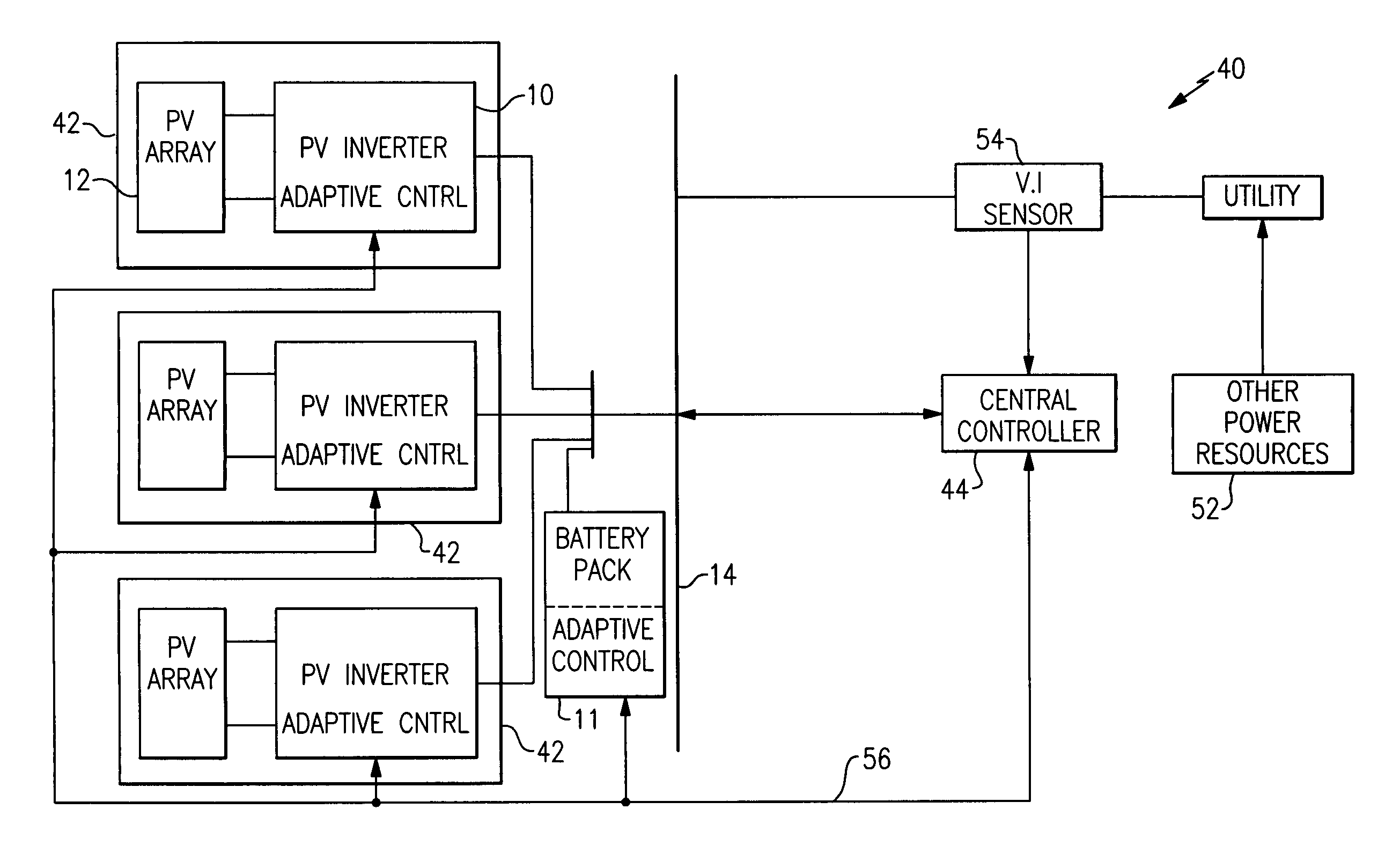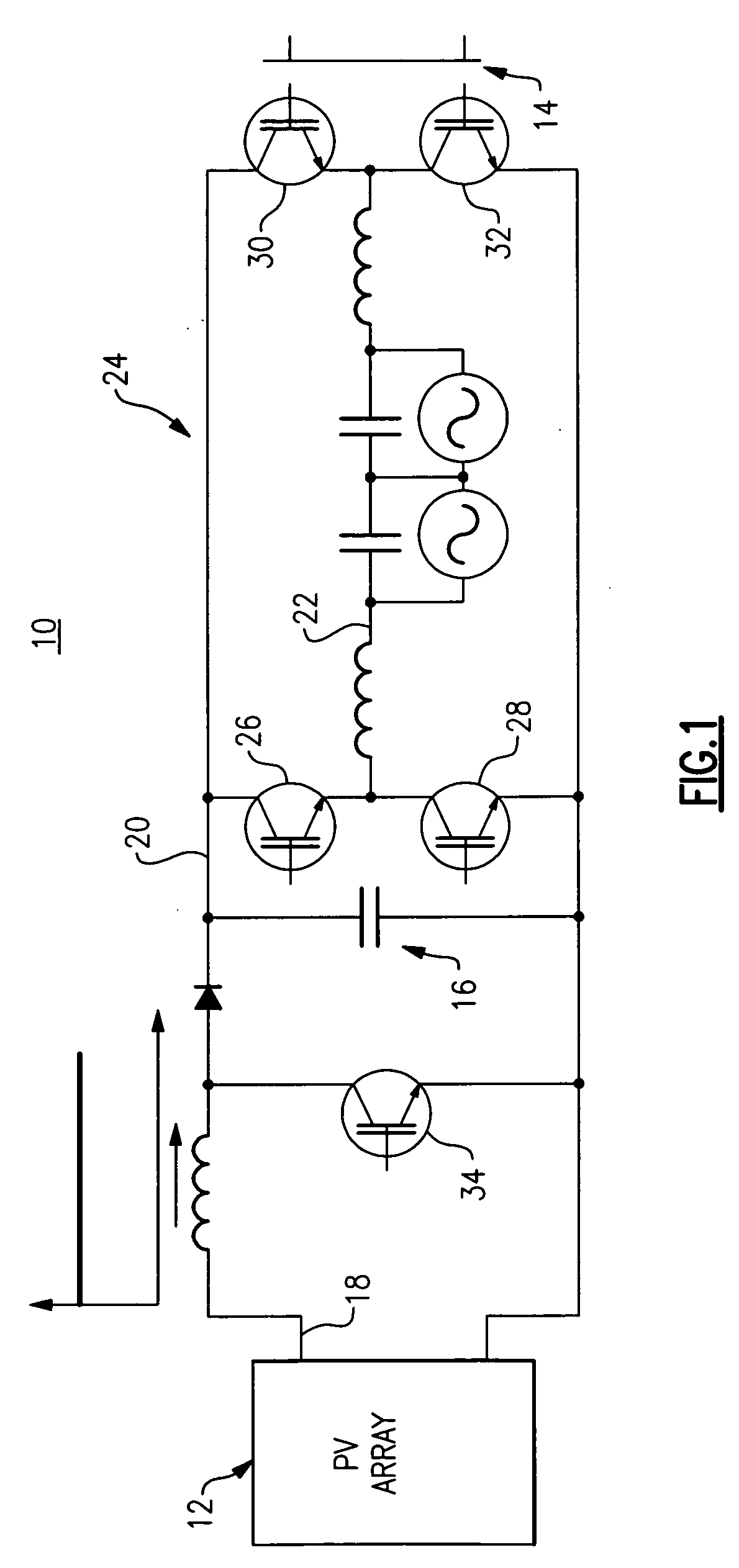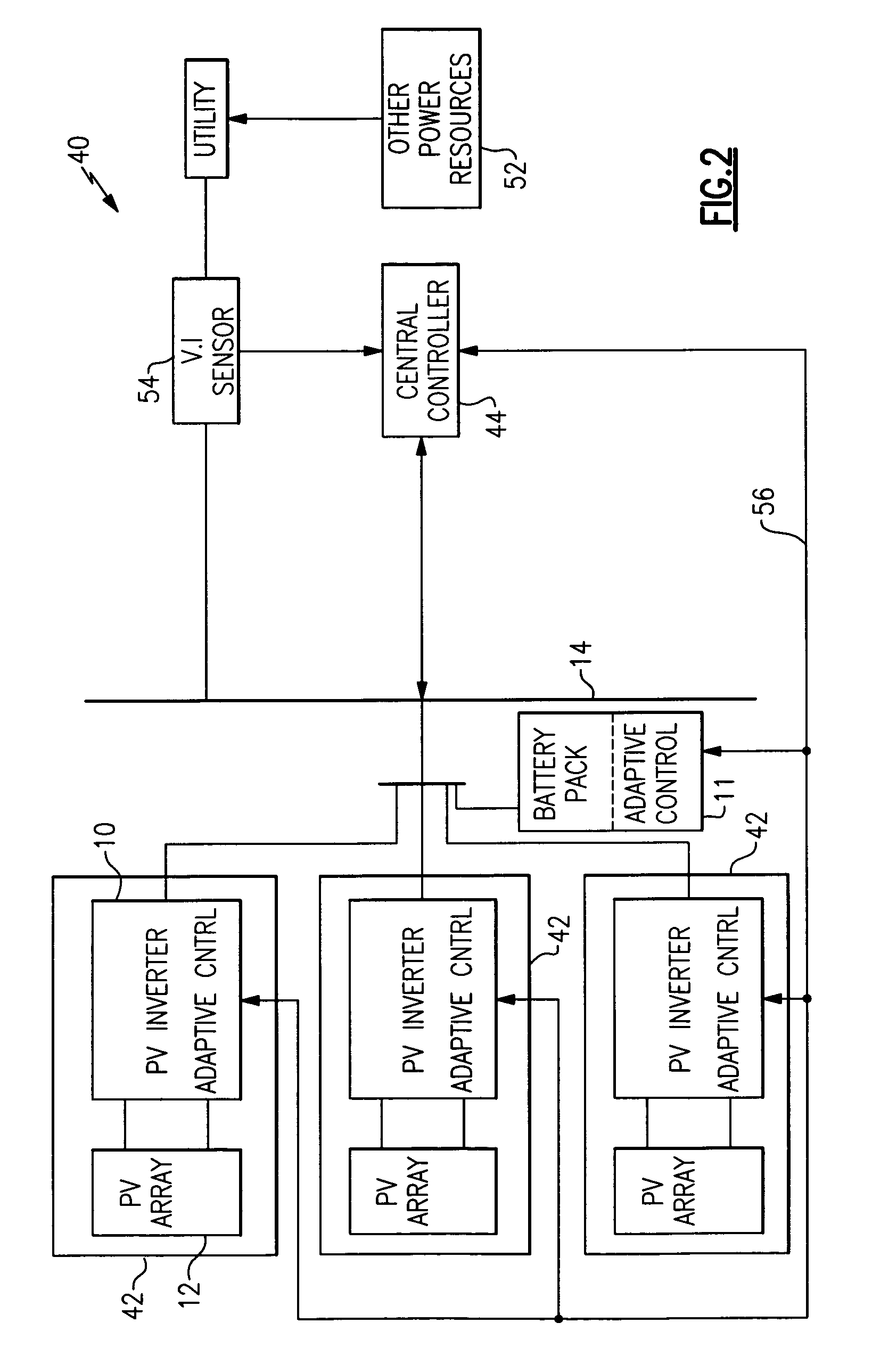System and method for controlling ramp rate of solar photovoltaic system
a solar photovoltaic and system technology, applied in non-electric variable control, process and machine control, instruments, etc., can solve the problems of slow rate, difficult to change the power output of thermal power generators quickly enough, and ramping down of thermal power generators
- Summary
- Abstract
- Description
- Claims
- Application Information
AI Technical Summary
Benefits of technology
Problems solved by technology
Method used
Image
Examples
Embodiment Construction
[0030]FIG. 1 is illustrates a photovoltaic inverter 10 topology that is known in the art. Photovoltaic inverter 10 employs a two-stage power circuit to convert a varying DC voltage of a PV array 12 to a fixed frequency AC current for a power grid 14. Photovoltaic inverter 10 uses a DC link capacitor 16 to implement the intermediate energy storage step. This means the PV inverter 10 first converts the variable PV DC voltage 18 to a constant DC voltage 20 that is greater than the grid voltage via a boost converter, and subsequently converts the constant DC voltage 20 to a current 22 via a PWM circuit 24 that can then be injected into the grid 14. Photovoltaic inverter 10 topology employs five switching devices 26, 28, 30, 32, 34 that are all switching at a high frequency.
[0031]A system and method for controlling collective power ramp rate of a PV system having a plurality of PV subsystems / inverters via a central or supervisory PV system controller are described below for particular em...
PUM
 Login to View More
Login to View More Abstract
Description
Claims
Application Information
 Login to View More
Login to View More - R&D
- Intellectual Property
- Life Sciences
- Materials
- Tech Scout
- Unparalleled Data Quality
- Higher Quality Content
- 60% Fewer Hallucinations
Browse by: Latest US Patents, China's latest patents, Technical Efficacy Thesaurus, Application Domain, Technology Topic, Popular Technical Reports.
© 2025 PatSnap. All rights reserved.Legal|Privacy policy|Modern Slavery Act Transparency Statement|Sitemap|About US| Contact US: help@patsnap.com



